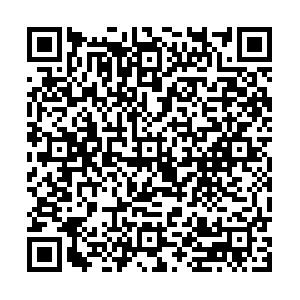Clinical features of drug-induced liver injury: an analysis of 445 cases
-
摘要:
目的描述性分析药物性肝损伤(DILI)的临床特征。方法回顾性收集2012年1月-2016年12月在上海中医药大学附属曙光医院、上海中医药大学附属普陀医院、上海交通大学医学院附属同仁医院诊断为DILI的445例患者的病史、症状体征、检查结果、治疗与转归等临床资料,分析DILI的临床特征。计量资料以中位数和四分位数间距[M(P25P75)]表示,组间比较采用Kruskal-Wallis H检验;计数资料组间比较采用χ2检验。结果 445例患者中,男136例(30.56%),女309例(69.44%),以4069岁的人群居多。194例(43.6%)应用西药导致,140例(31.46%)应用中药导致,中西药联用者92例(20.67%),服用保健品者19例(4.27%)。引起肝损伤的中药主要有何首乌及其制剂、仙灵骨葆胶囊、癃闭舒胶囊等;导致肝损伤的西药主要有心血管用药、抗微生物用药、解热镇痛药、抗肿瘤用药、抗结核药等。临床症状主要有乏力、纳差、黄疸、恶心等,其中以乏力(65.17%)最常见。临床分型主要为肝细胞损伤型,占70.11...
Abstract:Objective To investigate the clinical features of drug-induced liver injury (DILI) by descriptive analysis.Methods A retrospective analysis was performed for the clinical data of 445 patients who were diagnosed with DILI in Shuguang Hospital Affiliated to Shanghai University of Traditional Chinese Medicine, Putuo Hospital Affiliated to Shanghai University of Traditional Chinese Medicine, and Tongren Hospital Affiliated to Shanghai Jiao Tong University School of Medicine from January 2012 to December 2016, including medical history, signs and symptoms, examination results, treatment, and prognosis.The clinical features of DILI were analyzed.The continuous data were expressed as median and inter-quartile range M (P25-P75) , and the Kruskal-Wallis H test was used for comparison of continuous data between groups; the chi-square test was used for comparison of categorical data between groups.Results Among all 445 patients, there were 136 male patients (30.56%) and 309 female patients (69.44%) , and most of the patients were aged 40-69 years.Of all patients, 194 (43.6%) had DILI induced by Western medicine, 140 (31.46%) had DILI induced by traditional Chinese medicine, 92 (20.67%) had DILI induced by Western medicine and traditional Chinese medicine, and 19 (4.27%) had DILI induced by healthcare products.Traditional Chinese medicine which induced DILI included Fallopia multiflora and its preparation, Xianling Gubao capsules, and Longbishu capsules, and Western medicine which induced DILI included cardiovascular drugs, antimicrobial agents, antipyretic and analgesic drugs, antitumor drugs, and antitubercular agents.Major clinical symptoms included weakness, poor appetite, jaundice, and nausea, among which weakness was the most common symptom, seen in 65.17% of all patients.Of all patients, 70.11% had hepatocellular injury type.There were significant differences in peak values of alanine aminotransferase (ALT) , aspartate aminotransferase (AST) , alkaline phosphatase, total bilirubin (TBil) , and international normalized ratio between patients with different types of DILI (t = 153.584, 97.366, 27.781, 24.177 and 6.236, all P < 0.05) , and the patients with liver injury induced by traditional Chinese medicine had significantly higher peak values of ALT, AST, and TBil than those with liver injury induced by Western medicine (all P < 0.05) .There was significant differences in liver injury score between patients with different types of DILI (χ2= 26.848, P < 0.001) .Of all patients, 98.65% achieved improvement, and there was no significant difference in prognosis between the patients with liver injury induced by traditional Chinese medicine and those with liver injury induced by Western medicine (χ2= 3.663, P > 0.05) .Conclusion DILI is commonly seen in female patients and middle-aged and elderly patients.Compared with those with liver injury induced by Western medicine, the patients with liver injury induced by traditional Chinese medicine have significantly greater abnormalities of biochemical parameters.Most of the patients with DILI have good prognosis.
-
Key words:
- drug-induced liver injury /
- signs and symptoms
-
[1]Drug-induced Liver Disease Study Group, Chinese Society of Hepatology, Chinese Medical Association.Guidelines for the management of drug-induced liver injury[J].J Clin Hepatol, 2015, 31 (11) :1752-1769. (in Chinese) 中华医学会肝病学分会药物性肝病学组.药物性肝损伤诊治指南[J].临床肝胆病杂志, 2015, 31 (11) :1752-1769. [2]CHEN M, SUZUKI A, BORLAK J, et al.Drug-induced liver injury:interactions between drug properties and host factors[J].J Hepatol, 2015, 63 (2) :503-514. [3]DAVID S, HAMILTON JP.Drug-induced liver injury[J].US Gastroenterol Hepatol Rev, 2010, 6:73-80. [4]BENICHOU C.Criteria of drug-induced liver disorders[J].J Hepatol, 1990, 11 (2) :272-276. [5]CHALASANI N, BONKOVSKY HL, FONTANA R, et al.Features and outcomes of 889 patients with drug-induced liver injury:the DILIN prospective study[J].Gastroenterology, 2015, 148 (7) :1340-1352. [6]ZHANG RX.The warning of the increased incidence of cardiovascular and cerebrovascular disease[J].Chin J Libr Inform Sci Tradit Chin Med, 2014, 38 (1) :30-31. (in Chinese) 张瑞祥.心脑血管病发病率上升的警示[J].中国中医药图书情报杂志, 2014, 38 (1) :30-31. [7]REN ZQ, WANG JH, GUO XY, et al.A review analysis of Chinese literatures 2005-2014:clinical features of drug-induced liver injury[J].Chin J harmacoepidemiol, 2016, 25 (5) :284-289. (in Chinese) 任张青, 王进海, 郭晓燕, 等.2005~2014年我国药物性肝损伤临床综合分析[J].药物流行病学杂志, 2016, 25 (5) :284-289. [8]ZHOU Y, YANG L, LIAO Z, et al.Epidemiology of drug-induced liver injury in China:a systematic analysis of the Chinese literature including 21, 789 patients[J].Eur J Gastroenterol Hepatol, 2013, 25 (7) :825-829. [9]HU Q, LIU W, SHAO H.Research progress of pharmacotherapy drug-induced liver injury[J].Chin J Clin Pharmacol Ther, 2016, 21 (2) :231-236. (in Chinese) 胡琴, 刘维, 邵宏.药物性肝损伤的药物治疗研究进展[J].中国临床药理学与治疗学, 2016, 21 (2) :231-236. [10]ANTOINE DJ, DEAR JW, LEWIS PS, et al.Mechanistic biomarkers provide early and sensitive detection of acetaminophen-induced acute liver injury at first presentation to hospital[J].Hepatology, 2013, 58 (2) :777-787. [11]NICOLETTI P, AITHAL GP, BJORNSSON ES, et al.Association of liver injury from specific drugs, or groups of drugs, with polymorphisms in hla and other genes in a Genome-Wide Association study[J].Gastroenterology, 2017, 152 (5) :1078-1089. [12]CHEN M, BORLAK J, TONG W.A model to predict severity of drug-induced liver injury in humans[J].Hepatology, 2016, 64 (3) :931-940. -




 PDF下载 ( 1631 KB)
PDF下载 ( 1631 KB)


 下载:
下载:

